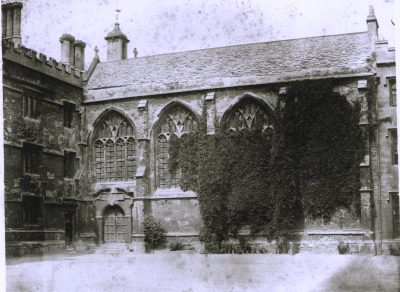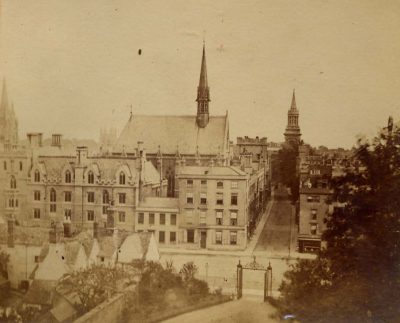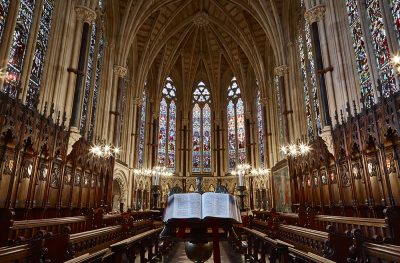The year 2009 marked the 150th Anniversary of the Consecration of the ‘new’ chapel at Exeter College. The idea of a replacement for the chapel built in 1623-24 was first suggested in 1813; concerns had been expressed about the structural soundness of the building. In a survey conducted by architect R. C. Hussey in the early 1840s it became clear that, although there was no immediate danger, repairs to the north wall of the chapel would be required in the long term and these would cost as much as building a new chapel. In reality, the decision to demolish the seventeenth century chapel was influenced as much by the religious leanings of the Fellowship as by concerns about the state of the building. Several of the Fellows were supporters of the Oxford Movement; indeed in 1837, Newman had remarked, ‘At Exeter, right opinions are strong’. The mood was therefore right for a complete re-design and the building of a chapel which would be Eucharistic in focus and Decorated Gothic in style.

The old Exeter College Chapel
After a protracted period, in which several architects of the day were considered, Scott was approved unanimously to design the new chapel in July 1853. Greatly influenced by French architecture, in particular the Parisian medieval jewel La Sainte-Chappelle, his proposal for Exeter reflected the best of French Gothic style. His design was for a building situated on the north side of the Fellows Garden, extending into the quad with a west front facing the gate tower; however, at a cost of £8,000 the Fellowship balked. Scott modified the proposal, suggesting it should be moved back to the site of the old chapel, avoiding the need to demolish student accommodation. This was finally agreed and, on 29th November 1856, the foundation stone was laid. By the time the work was finally completed the cost was nearer £12,000, met by an extensive fundraising campaign as well as significant sacrifices made by the Fellows and students of the day. The chapel was consecrated on 18th October 1859 by the then Bishop of Oxford, Samuel Wilberforce, with Bishop Philpotts of Exeter in attendance.

The ‘new’ Exeter College Chapel, seen from Trinity College, in the mid-Victorian Era
In 2007 the Chapel underwent thorough restoration as part of the Anniversary celebrations, and cleaning work revealed bold features such as the elaborate ceiling stonework and marble inlays, which had been obscured for decades. The same year work began on the exterior, cutting out large areas of crumbling stone and fixing newly carved grotesques and gablets. After a recent restoration of the windows, the Chapel is looking more resplendent than ever before.

The interior of the renovated Exeter College Chapel, looking towards the altar
For further detail of the history of the chapel, see G. Tyack, ‘Gilbert Scott and the Chapel of Exeter College, Oxford’, Architectural History 50 (2007), from which this summary draws.
